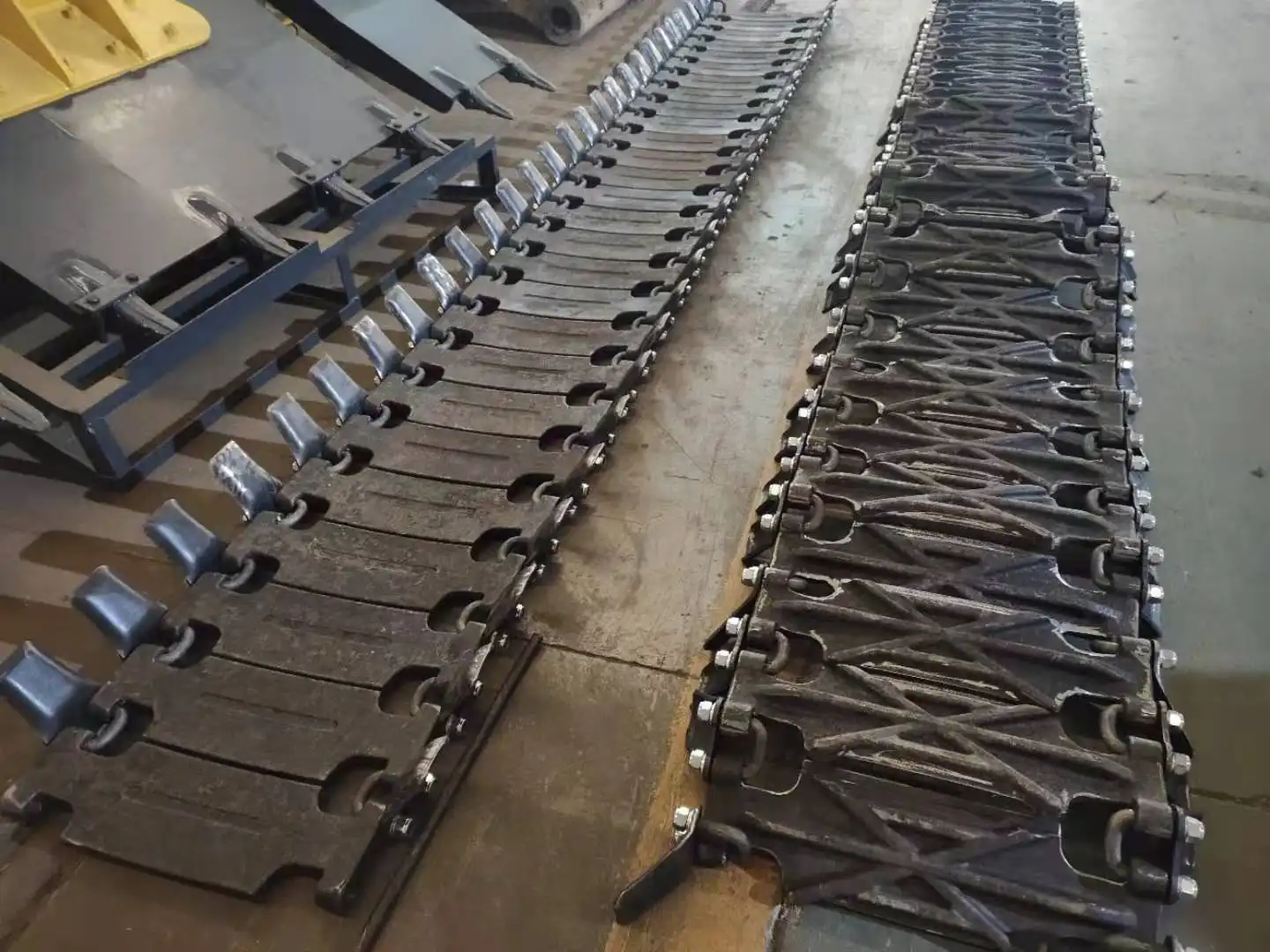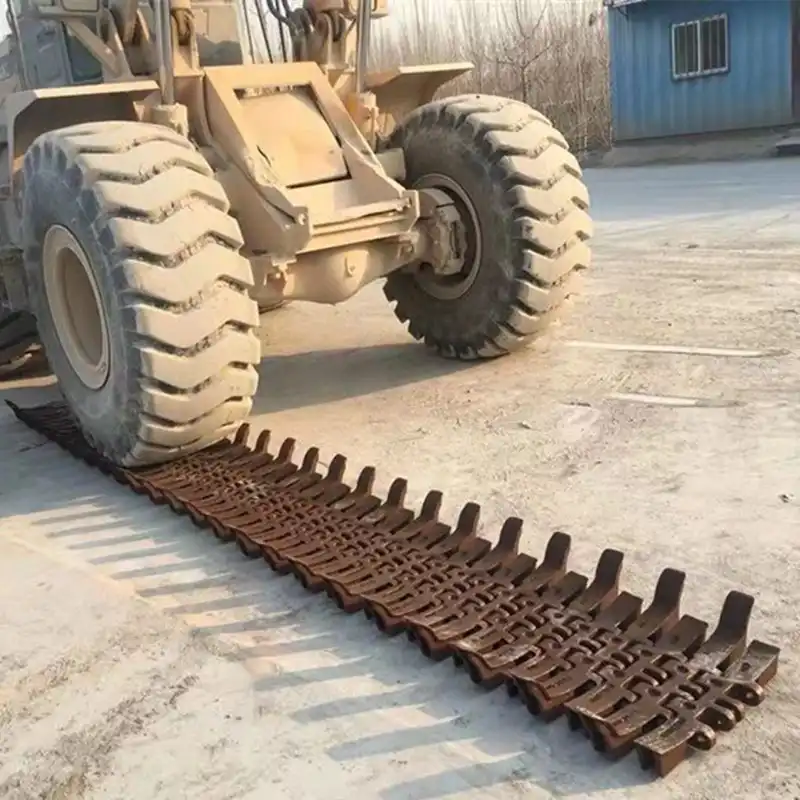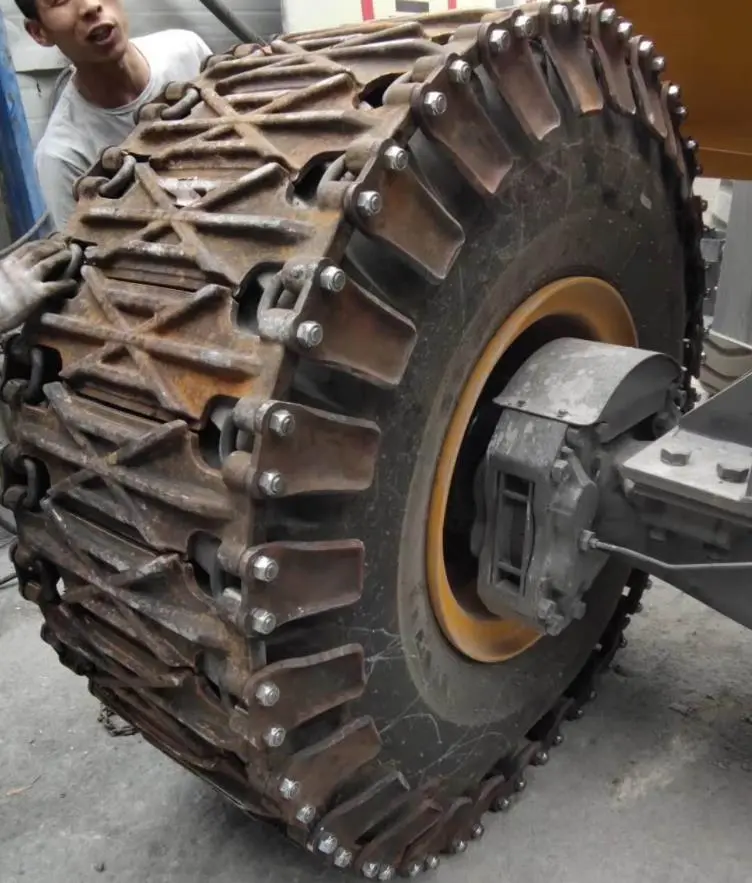How to put tire chains on a loader?
Installing tire chains on your loader requires careful planning and proper technique to ensure maximum effectiveness and safety. The process involves positioning the loader tire protection chain correctly around each tire while maintaining proper tension and alignment. Professional installation typically takes two experienced operators about one hour to complete on a standard loader, though this timeframe can vary depending on equipment size and environmental conditions. Understanding the correct installation procedure prevents damage to both the chains and your expensive loader tires while ensuring optimal traction performance in challenging terrain. Whether you're working in construction, mining, or forestry applications, proper chain installation directly impacts operational efficiency and equipment longevity.
Before Installation: Safety and Preparation
Essential Safety Protocols
Safety remains paramount when working with heavy machinery and tire protection systems. Always ensure the loader is positioned on level ground with the parking brake engaged and engine completely shut off. Remove the ignition key and implement lockout procedures to prevent accidental startup during installation. Wear appropriate personal protective equipment, including safety glasses, work gloves, and steel-toed boots. The weight of tire chains can exceed 100 pounds per set, requiring proper lifting techniques to avoid injury.
Required Tools and Equipment
Gather all necessary tools before beginning the installation loader tire protection chain process. You'll need a tire pressure gauge, socket wrench set, chain tensioning tools, and measuring tape. Keep a flashlight or headlamp available for visibility in darker work environments. Having a hydraulic jack or lift equipment accessible can simplify the process, though many installations can be completed without lifting the loader. Organize your tools systematically to maintain efficiency throughout the installation.
Pre-Installation Inspection
Conduct a thorough inspection of both the loader tires and the loader tire protection chains before installation. Check tire pressure and ensure it meets manufacturer specifications, as improper pressure affects chain fit and performance. Examine the chain links for wear, damage, or manufacturing defects that could compromise safety or effectiveness. Verify that you have the correct chain size for your specific tire dimensions, as improper sizing leads to poor performance and potential equipment damage.

Step-by-Step Installation Process
Initial Chain Positioning
Begin by laying the tire protection chains flat on the ground beside each tire, ensuring they're untangled and properly oriented. The chains should form a web pattern that will cover the tire tread area uniformly. Position the loader so you can access both sides of each tire easily, considering that you'll need to work around the tire circumference. Identify the loader tire protection chain's connecting points and fastening mechanisms before attempting to position them on the tire.
Mounting and Securing Process
Carefully drape the loader tire protection chain over the top of the tire, ensuring equal distribution on both sides. The chain should hang evenly, with connecting points accessible for fastening. Connect the side chains first, working from the outside toward the center of the tire. Maintain consistent tension across all connection points to prevent uneven wear or loosening during operation. Use the manufacturer's recommended torque specifications for all fasteners to ensure proper security without over-tightening.
Final Adjustments and Verification
After securing all connections, slowly rotate the tire to check for proper chain positioning and clearance. The chains should maintain consistent contact with the tire surface while allowing adequate clearance from the loader's undercarriage and wheel wells. Adjust tension as needed to eliminate excessive slack while avoiding over-tightening that could stress the chain links. Verify that all fasteners are properly secured and that the chain pattern provides uniform coverage across the tire tread area.

Key Tips for Efficient Installation
Time-Saving Techniques
Experienced operators develop efficient installation methods that significantly reduce setup time. Pre-organizing chains by size and position streamlines the process, while having a dedicated workspace keeps tools and hardware accessible. Working with a partner allows one person to position chains while another handles fastening, cutting installation time substantially. Developing a consistent routine for each tire ensures nothing is overlooked and maintains quality standards across all installations.
Common Installation Mistakes
Avoid rushing the installation process, as this leads to improper loader tire protection chain positioning and potential equipment damage. Never attempt to install chains on a running loader or without proper safety precautions. Incorrect chain sizing represents a frequent error that compromises both performance and safety. Over-tightening fasteners can damage chain links or tire surfaces, while under-tightening allows chains to shift during operation, reducing effectiveness and creating safety hazards.
Maintenance and Longevity Considerations
Proper installation extends the life of both the loader tire protection chain and the underlying tires. Regular inspection during operation helps identify loosening or wear before it becomes problematic. Understanding the relationship between chain tension and tire pressure ensures optimal performance across varying operating conditions. Quality chains with proper installation can triple tire lifespan while reducing maintenance requirements and operational downtime.
Environmental factors significantly impact chain performance and longevity. Muddy conditions require more frequent cleaning to prevent debris buildup that can cause premature wear. Rocky terrain demands higher-grade chains with reinforced links to withstand constant impact. Temperature variations affect metal expansion and contraction, requiring periodic tension adjustments to maintain optimal performance. Operators working in corrosive environments should consider protective coatings or specialized alloys that resist chemical degradation.
Establishing a preventive maintenance schedule maximizes equipment investment returns. Document installation dates, operating hours, and inspection findings to track chain performance over time. This data helps predict replacement needs and optimize maintenance intervals. Smart operators keep spare chain components readily available to minimize downtime when repairs become necessary. The cost of preventive maintenance remains minimal compared to emergency repairs or tire replacement expenses.
Advanced Installation Considerations
Seasonal Installation Strategies
Different seasons present unique challenges that affect tire chain installation and performance. Winter installations often occur in freezing temperatures where metal components become brittle and handling chains requires extra caution. Cold weather can make fasteners difficult to manipulate, while frozen ground provides excellent stability for positioning equipment during installation. Spring installations must account for muddy conditions that complicate access around tires and may require additional cleaning steps.
Equipment-Specific Installation Variations
Various loader models require specialized installation approaches based on wheel well clearances, tire sizes, and hydraulic system configurations. Compact loaders often have limited access space, requiring careful planning to position chains without interference from loader arms or attachments. Large mining loaders may need specialized lifting equipment to handle the substantial weight of oversized protection chains. Understanding your specific equipment requirements prevents installation delays and ensures optimal chain performance.
Performance Optimization Techniques
Experienced operators employ advanced techniques to maximize chain effectiveness beyond basic installation. Proper break-in procedures gradually stress new chains to eliminate weak links before full operational loads. Strategic chain positioning can concentrate protection where tire wear typically occurs most heavily. Understanding load distribution patterns helps optimize chain placement for specific applications, whether hauling materials, grading surfaces, or navigating rough terrain.

①How long does it take to install tire chains on a loader?
Professional installation typically requires one hour with two experienced operators working together on a standard loader.
②Can I install tire chains by myself?
While possible, having a partner significantly improves safety and efficiency during the installation process.
③Do tire chains affect loader performance?
Quality loader tire protection chain systems enhance traction and efficiency while protecting expensive tires from damage.
④How often should I inspect installed tire chains?
Inspect chains before each work shift and conduct thorough examinations weekly or after every 40 operating hours.
⑤What happens if chains are installed incorrectly?
Improper installation can cause tire damage, reduced traction, increased fuel consumption, and potential safety hazards.
Maximize Your Equipment Investment
Understanding proper tire chain installation techniques directly impacts your bottom line through reduced tire replacement costs and improved operational efficiency. The investment in quality loader tire protection chain systems pays dividends through extended equipment life and enhanced productivity. Professional installation ensures optimal performance while minimizing maintenance requirements and unexpected downtime costs.
Tiannuo's innovative tire protection solutions offer superior durability and performance for demanding applications across the construction, mining, and forestry industries. Our chains protect tires while tripling their lifespan, enhance traction to boost operational efficiency, and reduce fuel consumption through improved performance. The low failure rate and minimal maintenance requirements make these systems ideal for high-utilization equipment where downtime costs are significant.
Ready to protect your loader investment and improve operational efficiency? Contact our equipment specialists to discuss the right tire protection solution for your specific applications. Our team provides comprehensive support from initial selection through installation guidance and ongoing maintenance recommendations. Reach out today at raymiao@stnd-machinery.com to learn more about how proper tire protection can transform your equipment performance and reduce operating costs.
References
- Heavy Equipment Tire Protection Systems: Installation and Maintenance Guidelines. Industrial Equipment Safety Council, 2023.
- Loader Tire Chain Installation Best Practices. Construction Equipment Manufacturers Association, 2023.
- Tire Protection Chain Performance Analysis in Mining Applications. Mining Equipment Safety Institute, 2024.
- Heavy Machinery Tire Longevity Through Protective Systems. Equipment Maintenance Journal, 2023.
- Operational Efficiency Improvements Through Tire Protection Technology. Construction Industry Research Foundation, 2024.
About Author: Arm
Arm is a leading expert in the field of specialized construction and railway maintenance equipment, working at Tiannuo Company.

